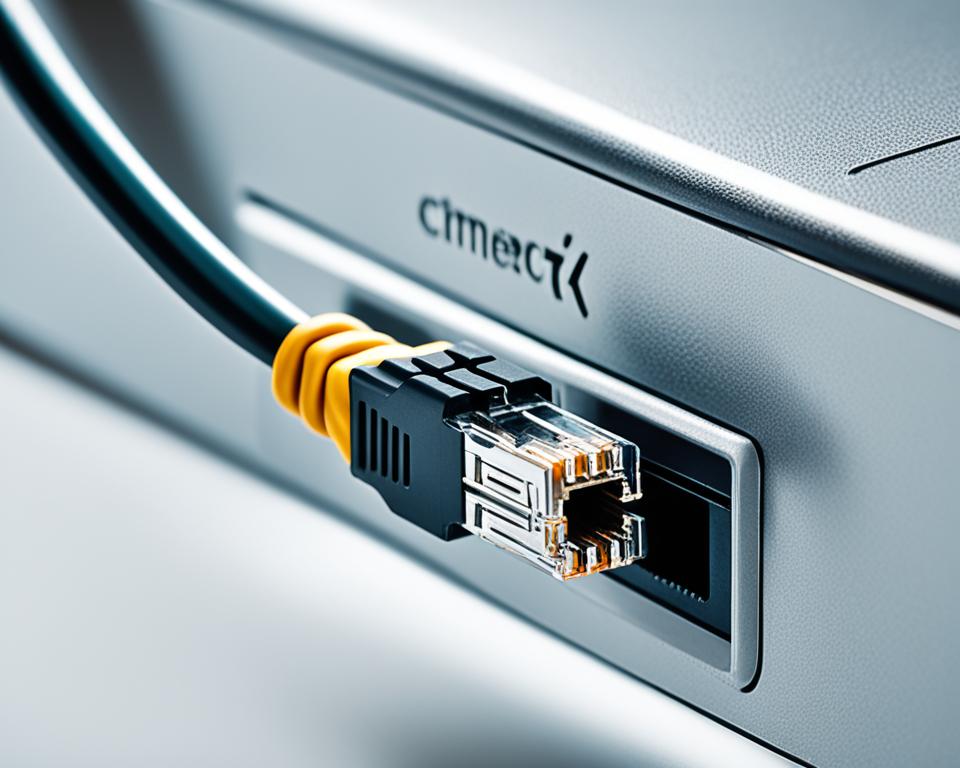Are you tired of experiencing buffering issues and connection problems while streaming your favorite IPTV channels? Do you want to enhance your viewing experience and ensure smooth, uninterrupted streaming? Look no further! In this comprehensive guide, we will provide you with essential tips and tricks to ensure a smooth IPTV streaming experience with reliable connectivity. From troubleshooting common issues to optimizing your internet connection and network settings, we’ve got you covered!
Whether you’re a sports enthusiast, a movie lover, or a TV series binge-watcher, smooth and uninterrupted streaming is key to enjoying your IPTV service. We understand the frustration that comes with buffering, freezing, and poor connection quality. That’s why we’ve compiled this comprehensive guide to help you overcome these issues and enjoy seamless entertainment on your IPTV platform.
Read on to discover expert tips for troubleshooting common IPTV issues, improving your internet connection, optimizing your network settings, choosing a reliable IPTV provider, and much more. Don’t let technical difficulties hinder your viewing pleasure. It’s time to take control and experience IPTV streaming like never before!
Key Takeaways:
- Optimize your internet connection for stable and high-speed streaming
- Check and adjust your network settings for better IPTV connectivity
- Choose a reliable IPTV provider to ensure smooth streaming
- Consider using a wired connection instead of relying on Wi-Fi
- Regularly update your IPTV apps and firmware for optimal performance
Improve Your Internet Connection
A stable and high-speed internet connection is crucial for seamless IPTV streaming. To enhance your streaming experience and resolve buffering problems, follow these tips to optimize your internet connection:
1. Check Your Internet Speed
Before troubleshooting any issues, it’s essential to test your internet speed. Use online speed test tools to determine if your connection meets the requirements for IPTV streaming. Ideally, you should have a minimum download speed of 25 Mbps for HD content and 50 Mbps for 4K streaming.
2. Connect via Ethernet
Wired connections are more reliable than Wi-Fi, as they provide a direct link between your IPTV device and the router. To improve IPTV performance, consider connecting your device using an Ethernet cable. This eliminates potential Wi-Fi interference and ensures a stable connection.
3. Secure your Wi-Fi Network
If you prefer a wireless connection, securing your Wi-Fi network is crucial to prevent congestion from neighboring networks. Use a strong and unique password, enable WPA2 encryption, and ensure your router is set to use a less congested wireless channel.
4. Position Your Router Appropriately
Optimize the placement of your router for better coverage and signal strength. Ideally, place the router in a central location away from obstructions, such as walls and electronics that may interfere with Wi-Fi signals. Consider using a Wi-Fi range extender if your router’s coverage is insufficient.
5. Update Router Firmware
Ensure your router’s firmware is up to date to take advantage of the latest performance and security enhancements. Check the manufacturer’s website or router settings for firmware updates and follow the instructions to install them.
6. Disable Bandwidth-Consuming Devices
Disconnect or limit the bandwidth usage of other devices on your network when streaming IPTV content. Bandwidth-intensive activities such as large downloads or online gaming can significantly affect your streaming experience by causing buffering issues or slowdowns.
7. Enable Quality of Service (QoS)
Modern routers often feature Quality of Service (QoS) settings that allow you to prioritize IPTV traffic. Enable QoS in your router settings and assign higher priority to IPTV streaming for smoother performance, especially during periods of heavy network usage.
8. Reduce Network Load
Minimize the number of devices connected to your network. Each connected device consumes bandwidth, so disconnect any unnecessary devices or temporarily disable automatic updates and background processes on connected devices to free up network resources for IPTV streaming.
9. Restart Your Router and Devices
Occasionally, restarting your router and IPTV devices can resolve temporary network issues. Power off both your router and IPTV device, wait for a few minutes, and then power them back on. This can refresh the network connection and help eliminate any temporary glitches.
By following these tips, you can improve your internet connection, alleviate buffering problems, and enjoy uninterrupted IPTV streaming.
| Tips to Improve Your Internet Connection |
|---|
| Check your internet speed using online speed test tools |
| Connect your IPTV device via Ethernet for a more stable connection |
| Secure your Wi-Fi network to prevent congestion |
| Optimize the placement of your router for better coverage |
| Update your router’s firmware regularly |
| Disable bandwidth-consuming devices during IPTV streaming |
| Enable Quality of Service (QoS) to prioritize IPTV traffic |
| Minimize the number of devices connected to your network |
| Restart your router and devices to resolve temporary issues |
Check Your Network Settings
Optimizing your network settings is essential for a seamless IPTV streaming experience. By fine-tuning your network configuration, you can enhance connectivity and ensure smooth playback of your favorite IPTV channels.
Follow these IPTV connectivity tips to optimize your network settings:
- Secure your Wi-Fi network: Set a strong password and enable encryption to prevent unauthorized access, ensuring a stable and secure connection for IPTV streaming.
- Position your Wi-Fi router: Place your router in a central location, away from obstructions, and minimize interference from other electrical devices or Wi-Fi networks.
- Choose the appropriate Wi-Fi channel: Select a less congested channel to avoid interference and improve signal strength for uninterrupted IPTV streaming.
- Enable Quality of Service (QoS) settings: Prioritize IPTV traffic by enabling QoS settings on your router, ensuring a smooth streaming experience even while other devices are connected.
- Disable bandwidth-hungry applications: Close or limit the usage of bandwidth-intensive applications running on other devices to allocate more bandwidth for IPTV streaming.
To further optimize your network settings, consider the bandwidth requirements of your IPTV service and perform a speed test to ensure your internet connection meets the recommended speeds.
“Proper network configuration is the key to unlocking the full potential of your IPTV streaming. By following these simple tips, you can optimize your network settings for a seamless viewing experience.”
Keep in mind that network settings may vary depending on the router and IPTV service provider. It’s advisable to consult your service provider’s documentation or customer support for specific instructions tailored to your setup.

| Network Setting | Recommendation |
|---|---|
| Secure Wi-Fi network | Set a strong password and enable encryption |
| Position Wi-Fi router | Central location, away from obstructions |
| Choose appropriate Wi-Fi channel | Select a less congested channel |
| Enable Quality of Service (QoS) | Prioritize IPTV traffic |
| Disable bandwidth-hungry applications | Close or limit usage on other devices |
Choose a Reliable IPTV Provider
When it comes to enjoying the best IPTV streaming experience, choosing a reliable provider is paramount. Your IPTV service provider plays a crucial role in determining the quality of your streaming and the availability of your favorite channels. To ensure seamless and uninterrupted streaming, consider the following factors when selecting a provider:
Service Reliability and Stability
Look for an IPTV provider that offers a reliable and stable service. This means minimal downtime and interruptions, allowing you to enjoy your favorite shows and movies without buffering or lagging. Read reviews and ratings from other users to gauge the provider’s reliability.
Content Variety and Accessibility
A reliable IPTV provider should offer a wide range of channels, including local and international networks, sports channels, movies, and on-demand content. Additionally, the provider should have multi-device compatibility, allowing you to stream on different devices such as smart TVs, smartphones, or tablets.
Streaming Quality
One of the crucial aspects of a reliable IPTV provider is the streaming quality it offers. Look for providers that offer high-definition (HD) and even ultra-high-definition (UHD) content to enhance your viewing pleasure. Smooth playback, crisp visuals, and clear audio are key indicators of a provider’s commitment to quality.
Customer Support
Opt for an IPTV provider that offers excellent customer support. In case you encounter any technical issues or have questions, reliable customer support will ensure prompt assistance, resolving your concerns and providing guidance when needed.
By considering these factors, you can make an informed decision when choosing a reliable IPTV provider. Ensuring a dependable service with high-quality streaming will enhance your overall entertainment experience.
Use Wired Connection for Streaming
While Wi-Fi is convenient, a wired connection tends to offer more stability for IPTV streaming. It provides a direct and uninterrupted link between your streaming device and the network, resulting in a smoother and more reliable viewing experience. Using a wired connection can help minimize buffering issues and ensure consistent video quality.
If you’re experiencing frequent buffering or lag when streaming IPTV, switching to a wired connection may be the solution. Follow these tips to set up a wired connection for optimal streaming:
- Connect your device to the router: Use an Ethernet cable to connect your streaming device directly to your router. This eliminates potential interference and signal loss associated with wireless connections.
- Check your device’s connectivity: Ensure that your streaming device has an Ethernet port and supports wired connections. Most modern smart TVs, streaming boxes, and gaming consoles have Ethernet ports.
- Position the router and devices: Place your router and streaming device in close proximity to each other to minimize cable length and potential signal degradation.
- Configure the network settings: Access your device’s network settings and set the connection type to wired or Ethernet. This ensures that your device prioritizes the wired connection for streaming purposes.
By using a wired connection, you can optimize your IPTV streaming experience and enjoy a seamless viewing experience without interruptions. Connect your streaming device directly to the router using an Ethernet cable to enhance stability and minimize buffering issues.
| Benefits of a Wired Connection for IPTV Streaming |
|---|
| 1. Increased stability and reliability. |
| 2. Reduced buffering and lag during streaming. |
| 3. Consistent video quality without interruptions. |
| 4. Minimized signal interference and loss. |

Regularly Update IPTV Apps and Firmware
Keeping your IPTV apps and firmware up to date is crucial for optimal performance. Regular updates ensure that you have access to the latest features and improvements, as well as enhanced security. In this section, we will discuss the importance of updating your IPTV apps and firmware, and guide you on how to execute the update process.
Benefits of Updating IPTV Apps and Firmware
- Improved Performance: Updating your IPTV apps and firmware can significantly enhance the overall performance of your IPTV system. You can enjoy smoother streaming, faster channel switching, and reduced buffering issues.
- New Features: Software updates often introduce new features and functionalities that can enrich your viewing experience. By keeping your apps and firmware updated, you’ll have access to exciting additions that enhance usability and entertainment.
- Bug Fixes and Stability: Developers constantly work to fix software bugs and improve stability. Regular updates ensure that any known issues are addressed, reducing the chances of encountering problems with your IPTV system.
- Security Enhancements: Updating your IPTV apps and firmware helps protect your system from potential security vulnerabilities. Developers regularly release updates to patch security flaws and safeguard your streaming experience.
How to Update IPTV Apps
Updating your IPTV apps is a straightforward process:
- Open the app store on your device. (For example, if you’re using an Android TV box, open the Google Play Store.)
- Search for the IPTV app you want to update.
- If an update is available, you will see an “Update” button. Click on it to install the latest version of the app.
- Once the update is complete, launch the app and enjoy the improved features and performance.
How to Update IPTV Firmware
Updating your IPTV firmware depends on the specific device you are using. Here is a general guideline:
- Visit the website of your IPTV device manufacturer or the support page dedicated to firmware updates.
- Search for the latest firmware version compatible with your device model.
- Download the firmware file to your computer.
- Connect your IPTV device to your computer using a USB cable.
- Copy the firmware file from your computer to the root directory of your IPTV device.
- Disconnect the device from your computer and follow the manufacturer’s instructions for firmware installation.
- Once the firmware update is complete, reconnect the device and enjoy the enhanced performance and features.
Regularly updating your IPTV apps and firmware ensures that you make the most of your streaming experience. By following these simple steps, you can ensure that your IPTV system remains up to date, secure, and optimized for seamless streaming.
Manage Bandwidth Usage
Efficiently managing your bandwidth is essential to ensure a smooth IPTV streaming experience. Bandwidth management plays a crucial role in optimizing IPTV performance and avoiding common issues such as buffering and lag. Here are some tips to help you optimize your bandwidth for uninterrupted IPTV streaming:
1. Prioritize IPTV Traffic
One effective way to manage bandwidth is by prioritizing IPTV traffic over other internet activities. By allocating more bandwidth to your IPTV streaming, you can ensure a seamless viewing experience without interruptions. Consult your router settings or network management software to give priority to IPTV traffic.
2. Limit Background Data Usage
Background applications and devices consuming bandwidth can impact your IPTV performance. Close unnecessary applications and pause automatic updates on devices connected to your network while streaming IPTV. This will free up bandwidth and allocate it to your IPTV streaming, enhancing the overall performance.
3. Use Quality of Service (QoS) Settings
Quality of Service (QoS) settings on your router allow you to allocate bandwidth priority based on different applications or devices. Configure QoS settings to prioritize IPTV streaming over other activities, optimizing your bandwidth usage and ensuring a seamless streaming experience.
4. Monitor Bandwidth Usage
Regularly monitor your bandwidth usage to identify any applications or devices consuming excessive bandwidth. By understanding your usage patterns, you can make informed decisions about optimizing bandwidth allocation for IPTV streaming and improving overall performance.
5. Optimize Video Quality
Streaming videos at higher quality requires more bandwidth. Consider adjusting the video quality settings in your IPTV app or device to a level that provides a satisfactory viewing experience while consuming less bandwidth. This can help optimize your overall bandwidth usage and enhance IPTV performance.
6. Connect via Ethernet
Connecting your IPTV device directly to your router using an Ethernet cable instead of relying on a Wi-Fi connection can improve bandwidth stability and reduce potential interference. Ethernet connections provide a more reliable and consistent network connection for uninterrupted IPTV streaming.
Implementing these bandwidth management tips can significantly enhance your IPTV streaming experience. By optimizing your bandwidth usage, you can enjoy seamless streaming with improved IPTV performance.
Check Hardware Requirements
To ensure a smooth IPTV streaming experience, it is crucial to meet the necessary hardware requirements. By checking and upgrading your hardware, you can enhance your viewing experience and enjoy seamless IPTV streaming.
First, let’s begin by identifying the hardware requirements for IPTV:
| Hardware | Requirements |
|---|---|
| Device | Your device should support IPTV streaming. This can be a smart TV, a computer, a tablet, or a smartphone. |
| Processor | A fast and powerful processor will ensure smooth playback of IPTV content without any lag or buffering issues. |
| RAM | Adequate RAM is necessary for smooth multitasking and handling the demands of IPTV streaming. |
| Storage | Ensure that you have enough storage space to download and store IPTV apps and content. |
| Graphics Card | If you plan to watch IPTV on a computer or gaming console, a dedicated graphics card can enhance the visual quality of the streaming content. |
| Network Connection | A stable and high-speed internet connection is essential for uninterrupted IPTV streaming. Choose between wired Ethernet or a strong Wi-Fi connection. |
Once you have assessed your existing hardware, you may need to upgrade certain components to meet the recommended requirements. Consider consulting a professional or referring to the device manufacturer’s specifications to ensure compatibility and optimal performance.
Upgrading your hardware to meet the IPTV requirements will help you enjoy a seamless streaming experience with high-quality video and audio. By ensuring that your device and network infrastructure align with the recommended specifications, you can minimize buffering, freezes, and other connectivity issues that may hinder your IPTV enjoyment.
Troubleshoot Common IPTV Issues
Despite taking precautions, it’s not uncommon to encounter certain issues while streaming IPTV. In this section, we will provide troubleshooting tips and solutions to help you overcome common problems that may arise during IPTV streaming.
Lagging or Buffering
If you experience lagging or buffering during IPTV streaming, it could be due to a poor internet connection or network congestion. To resolve this issue:
- Check your internet speed: Use a reliable internet speed test tool to measure your connection’s speed. Ensure that it meets the minimum requirements for IPTV streaming.
- Restart your router: Power off your router, wait for a few seconds, and then turn it back on. This can help refresh your connection and resolve temporary network issues.
- Limit connected devices: If multiple devices are connected to your network at the same time, it can strain your bandwidth. Disconnect unnecessary devices or limit their internet usage to improve streaming performance.
- Use a wired connection: Wi-Fi signals can be susceptible to interference, resulting in a weaker connection. Consider using an Ethernet cable to connect your device directly to the router for a more stable connection.
Audio or Video Quality Issues
If you’re facing audio or video quality issues while streaming IPTV, follow these troubleshooting steps:
- Adjust video settings: Check the video settings on your IPTV app or device. Ensure that the resolution is set to an appropriate level based on your internet speed and device capabilities.
- Clear cache: Cached data can sometimes affect streaming quality. Clear the cache of your IPTV app or device to improve performance.
- Update your app or firmware: Outdated software can lead to compatibility issues. Make sure your IPTV app and device firmware are up to date to ensure optimal performance.
- Disable VPN: If you’re using a VPN service, try disabling it temporarily to determine if it’s affecting the audio or video quality. Some VPNs can introduce additional latency or bandwidth limitations.
Note: If the issues persist, it’s advisable to contact your IPTV service provider for further assistance. They may be able to identify any server-side issues or provide specific troubleshooting steps.
No Signal or Connection
If you’re encountering difficulties with signal or connectivity while streaming IPTV, consider the following troubleshooting tips:
- Check physical connections: Ensure that all cables connecting your IPTV device or set-top box are securely plugged in. Verify that there are no loose connections or damaged cables.
- Restart your device: Power off your IPTV device or set-top box, wait for a few seconds, and then turn it back on. This can help resolve temporary software or firmware glitches.
- Reset your device: If restarting doesn’t resolve the issue, you can try resetting your IPTV device or set-top box to its factory settings. However, note that this will erase any personalized settings and configurations.
By following these troubleshooting tips, you’ll be better equipped to resolve common IPTV issues and enjoy a more uninterrupted streaming experience.

Test Your Internet Speed
Ensuring a reliable internet speed is crucial for a high-quality IPTV streaming experience. To assess the speed of your internet connection and optimize it for smooth IPTV streaming, follow these steps:
Step 1: Choose a Reliable Internet Speed Test Tool
There are several reliable internet speed test tools available online. Choose a reputable one, such as Ookla’s Speedtest or Fast.com, for accurate results.
Step 2: Connect to a Stable Network
Before running the speed test, ensure that you are connected to a stable internet network. Connect your device directly to the router using an Ethernet cable for the most accurate results.
Step 3: Close Background Applications
Close any unnecessary applications or processes running in the background that might consume bandwidth during the speed test. This will ensure accurate measurements.
Step 4: Run the Speed Test
Visit the chosen speed test tool’s website and click on the “Go” or “Start Test” button to initiate the test. The tool will measure your internet speed by calculating the download and upload speeds.
Step 5: Interpret the Results
Once the speed test is complete, you will be provided with your download and upload speeds. These speeds are measured in Mbps (megabits per second). To ensure smooth IPTV streaming, a download speed of at least 25 Mbps is recommended for HD content, while 50 Mbps or higher is recommended for 4K streaming.
Step 6: Take Action if Necessary
If your internet speed falls below the recommended values, there are several steps you can take to improve it. Contact your internet service provider to inquire about faster plans, optimize your network settings, or consider upgrading your hardware.
Pro Tip: Repeat the speed test at different times of the day to check for any fluctuations in your internet speed. This can help identify potential issues and assist in troubleshooting.
By regularly testing your internet speed and ensuring it meets the recommended values, you can optimize your IPTV streaming experience for seamless and uninterrupted entertainment.
| Internet Speed | Suitable for |
|---|---|
| 25 Mbps or higher | HD streaming |
| 50 Mbps or higher | 4K streaming |
Conclusion
By implementing the tips and guidelines provided in this guide, you can ensure a smooth IPTV streaming experience with reliable connectivity. Prioritize optimizing your internet connection to enhance IPTV performance and prevent buffering issues. Consider using a wired connection for more stability and regularly updating your IPTV apps and firmware to access the latest features and improvements.
Efficiently managing bandwidth usage is essential for seamless streaming. By prioritizing bandwidth for IPTV streaming and minimizing other data-intensive activities, you can minimize interruptions and enjoy uninterrupted viewing.
Remember to choose a reputable IPTV provider to guarantee high-quality streaming and access to a wide range of content. A reliable provider ensures a stable connection and ensures that you have access to the latest and most popular channels and shows.
Thank you for reading this guide, and we hope that the information provided here helps you optimize your IPTV streaming experience. By following these strategies, you can enjoy seamless streaming and an enhanced IPTV performance. Happy streaming!
FAQ
How can I ensure a smooth IPTV streaming experience?
What should I do to improve my internet connection for IPTV streaming?
Are there any tips to optimize my network settings for better IPTV connectivity?
What factors should I consider when choosing a reliable IPTV service provider?
Is a wired connection more suitable for IPTV streaming?
How important is it to regularly update IPTV apps and firmware?
How can I efficiently manage my bandwidth for IPTV streaming?
Are there any specific hardware requirements for smooth IPTV streaming?
What should I do if I encounter common IPTV issues?
How can I test my internet speed for IPTV streaming?






